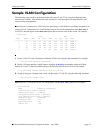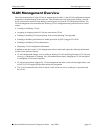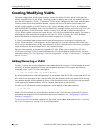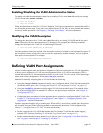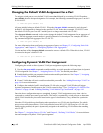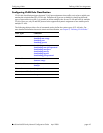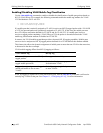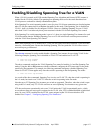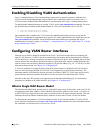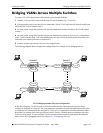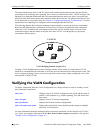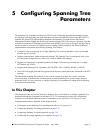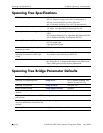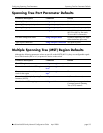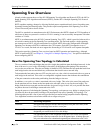
Configuring VLANs Enabling/Disabling Spanning Tree for a VLAN
OmniSwitch 6600 Family Network Configuration Guide April 2006 page 4-11
Enabling/Disabling Spanning Tree for a VLAN
When a VLAN is created, an 802.1D standard Spanning Tree Algorithm and Protocol (STP) instance is
enabled for the VLAN by default. The spanning tree operating mode set for the stack determines how
VLAN ports are evaluated to identify redundant data paths.
If the Spanning Tree switch operating mode is set to flat, then VLAN port connections are checked against
other VLAN port connections for redundant data paths. In this mode, if the Spanning Tree is disabled on
VLAN 1, then it is disabled for all configured VLANs. However, disabling Spanning Tree on a VLAN
other than VLAN 1 excludes only those ports associated with that VLAN from Spanning Tree control.
If the Spanning Tree switch operating mode is set to 1x1, there is a single Spanning Tree instance for each
VLAN broadcast domain. Disabling Spanning Tree on a VLAN in this mode excludes ports associated
with that VLAN from Spanning Tree control.
Note. When Spanning Tree is disabled for a VLAN, all active ports associated with that VLAN are transi-
tioned to a forwarding state. Ensure that disabling Spanning Tree fora particular VLAN will not cause a
network loop to go undetected.
The vlan stp command is used to enable/disable a Spanning Tree instance for an existing VLAN. In the
following examples, Spanning Tree is disabled on VLAN 255 and enabled on VLAN 755:
-> vlan 255 stp disable
-> vlan 755 stp enable
The above commands configure the VLAN Spanning Tree status for both the 1x1 and flat Spanning Tree
modes. Using the 1x1 or flat parameter with this command, configures the STP status only for the mode
specified by the parameter. For example, the following command configures a disabled Spanning Tree
status for VLAN 755 that applies only when the switch is operating in the flat Spanning Tree mode:
-> vlan 755 flat stp disable
As a result of the above command, Spanning Tree is active on VLAN 755 when the switch is operating in
the 1x1 mode, but inactive on VLAN 755 when the switch is operating in the flat mode.
Note that up to 253 Spanning Tree instances per switch are supported. Therefore, when the switch is oper-
ating in the 1x1 mode, only 253 VLANs can have an active Spanning Tree instance at any given time.
STP does not become operationally active on a VLAN unless the VLAN is operationally active, which
occurs when at least one active port is assigned to the VLAN. Also, STP is enabled/disabled on individual
ports. So even if STP is enabled for the VLAN, a port assigned to that VLAN must also have STP
enabled. See Chapter 5, “Configuring Spanning Tree Parameters.”



